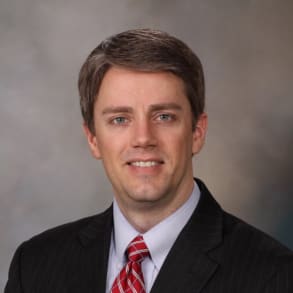Mayo Clinic heart specialists at the Rochester, Minnesota, campus review advances in the treatment of aortic valve disease, including new options for treatment with transcatheter aortic valve replacement (TAVR) and transcatheter aortic valve implantation (TAVI).
Hector I. Michelena, M.D. , cardiologist, and Arman Arghami, M.D. , and Phillip G. Rowse, M.D. , cardiovascular surgeons, also discuss complex conditions involving redo or repeat operations or multiple valve interventions.
Explore more Mayo Clinic Cardiovascular Medicine Resources for medical professionals .
[MUSIC PLAYING] HECTOR MICHELENA: I would say that the major success that has been obtained in the last 10 years with these catheter procedures is TAVR, transcatheter aortic valve replacement. ARMAN ARGHAMI: We are now able to replace a patient's diseased aortic valve just through a catheter through the groin with no incision. And the procedure is done in less than a few hours, and the patient can leave the hospital within a day or two. PHILLIP ROWSE: So TAVR technology has been around for about a decade and a half. And the initial use for TAVR was for patients who we thought were potentially too sick to undergo surgery or would be too risky. And we have studied patients who are at moderate risk and now even low-risk patients and have found that TAVR technology can benefit those even of moderate to low risk. Here at Mayo Clinic, we receive patients with lots of complex medical problems and issues. And one of the more common issues we encounter rather frequently is having multiple valve problems, leaky mitral valve, for example, leaky tricuspid valve, an obstructed aortic valve, potentially all in combination. ARMAN ARGHAMI: Traditionally, that meant that we had to open the chest, cut out the old valve, and sew in a new valve. Now, the TAVR allows us to shrink a prosthetic valve in a very small size and put it through a catheter from usually the groin of the patient into an artery and then push it all the way to the heart and let it deploy or open and squeeze the old valve out and replace it with the new one. PHILLIP ROWSE: We redo operations just about every day of the week and are very comfortable in offering repeat surgeries for patients with multi valve disease or index operations where multiple valves are needing to be intervened upon. HECTOR MICHELENA: Working with other medical professionals is a very important part of all of this because many patients come from far away, and one needs to be very clear in communication with the physician that's going to take care of this patient when this patient goes back to their local environment. PHILLIP ROWSE: I think Mayo Clinic has a very robust relationship with referring providers, particularly in cardiovascular disease. We help to support a practice where, if a local provider has a concern for a patient or would like us to review their record, we can do that ahead of time without having the patient necessarily be here and provide what our expert recommendation would be and help to move that patient's care along and, ultimately, to come to Mayo and have an operation if we think it's indicated. ARMAN ARGHAMI: Cardiac surgery is an evolving field, especially in the recent years with the advancement in robotic surgery or transcatheter procedures like TAVR. We are changing the face of this practice very quickly. [MUSIC PLAYING]



